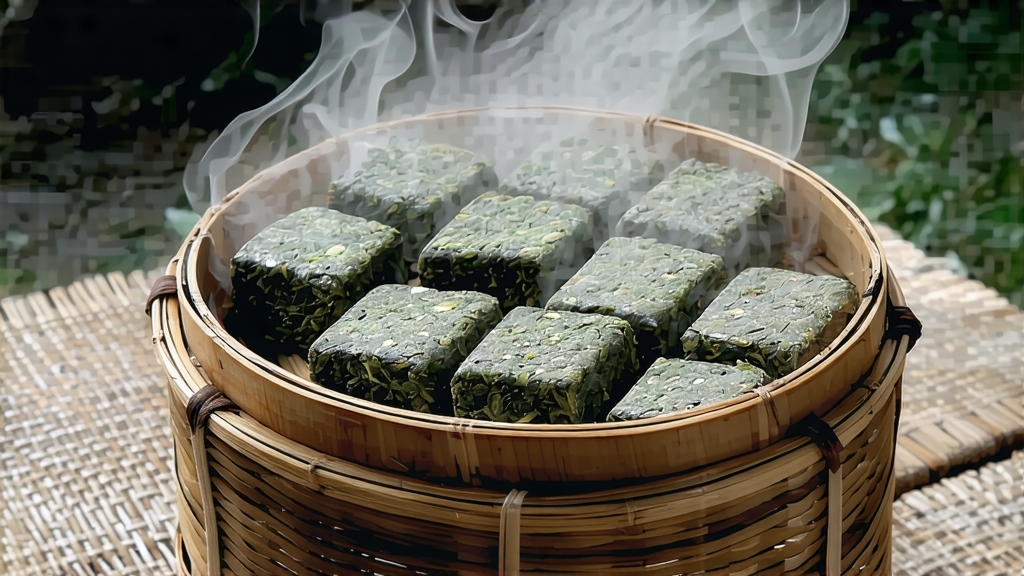
Tucked away in the subtropical mountains of southern China, Liu Bao tea has spent four centuries quietly fermenting its way into the hearts of truck drivers, emperors, and now, curious tea lovers on every continent. Often overshadowed by its more famous cousin Pu-er, Liu Bao is the hidden archetype of Chinese dark tea—an edible relic that tastes of damp earth, sweet betel nut, and the camphor air of an old Chinese apothecary. To understand Liu Bao is to witness how microbes, humidity, and human patience can turn a simple leaf into a moving snapshot of place and time.
Historical Footprints
The story begins in the small town of Liubao, Wuzhou prefecture, Guangxi province, where the tea takes its name. During the Qing dynasty, Liu Bao was packed in tight bamboo baskets and carried on horseback along the Ancient Tea-Horse Road, supplying frontier garrisons and Tibetan monasteries with a beverage that eased digestion after heavy yak-butter meals. Imperial records from 1796 note that the Jiaqing Emperor awarded Liu Bao the honorary gong cha (“tribute tea”) status, a title that guaranteed demand and meticulous production standards. When the West opened China’s treaty ports, Liu Bao sailed down the Xunjiang River to Guangzhou and onward to Southeast Asia, where it became a breakfast staple in Malaysian tin mines and Singaporean kopitiams. The tropical climate of these regions accelerated the tea’s post-fermentation, serendipitously revealing deeper layers of flavor that would later inspire intentional wet-piling techniques.
Varietal Identity
Unlike Pu-erh, which is made from the large-leaf Yunnan assamica variety, Liu Bao is produced from the medium-leaf Camellia sinensis var. sinensis native to Guangxi. Local cultivars such as “Xiao Ye Zhong” (small-leaf) and “Zhong Ye Zhong” (medium-leaf) are prized for their balanced polyphenols and rapid microbial affinity. The leaf’s relatively thin cell wall allows faster enzymatic breakdown during fermentation, giving Liu Bao its trademark mellow character within a shorter aging window—typically five to seven years for optimal drinkability, although connoisseurs cherish examples aged forty years or more.
Crafting the Darkness
Liu Bao’s processing follows a choreography that has changed little since the Qing era. After spring picking, leaves are withered under mountain shade to reduce moisture to roughly 65 %. A brief shaqing (“kill-green”) at 160 °C deactivates oxidative enzymes, but the roast is lighter than that of green tea, preserving microbial spores critical to later fermentation. Rolling is done mechanically nowadays, yet older workshops still foot-tread the leaves in bamboo trays to bruise cell membranes without shredding them. The defining step is “wet piling” (wo dui): leaves are sprayed with mountain water, heaped 70 cm high, and covered with jute sacks. Indigenous microbes—primarily Aspergillus niger, Blastobotrys adeninivorans, and various lactic acid bacteria—feast on leaf polysaccharides, raising the heap temperature to 55 °C within 36 hours. Tea masters turn the pile every five days, aerating and redistributing moisture much like a vineyard punch-down. After 25–30 days the leaf turns chestnut-brown and emits a sweet fungal aroma reminiscent of cooked lotus root. The tea is then dried in bamboo baskets over a gentle pine charcoal fire, absorbing subtle smoky top notes that will later recede into the background during aging.
Post-fermentation, Liu Bao is packed into plaited bamboo baskets lined with banana leaves. These baskets, ranging from 250 g “tea pillows” to 50 kg “dragon jars,” allow micro-oxygenation while shielding the tea from excessive humidity. Stored in riverside warehouses where morning mist rolls through louvered windows, the tea continues to ferment slowly, developing the celebrated chen xiang (“aged aroma”) that perfumers liken to antique sandalwood and library leather.
Grades and Styles
Commercial Liu Bao is classified by leaf grade and basket size. Top-grade “Special Flag” (Te Ji) comprises one bud with two leaves, offering a glossy russet liquor and honeyed finish. “First Grade” shows more stem but still brews a bright maroon cup with hints of dried longan. Larger broken-leaf grades, labeled “Third” or “Fifth,” are favored by Hong Kong dim-sum restaurants for their brisk, malty body that cuts through greasy har g